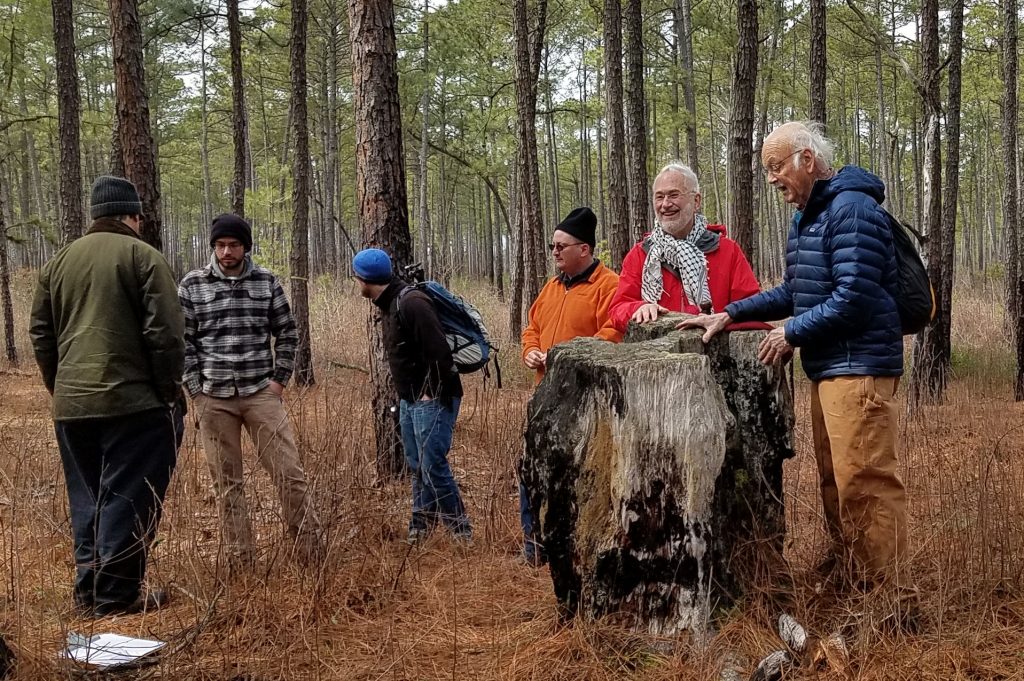
Attended a wonderful program at the Zuni Pine Barrens, hosted by Lytton Musselman, from Old Dominion University and Cecil Frost, from University of North Carolina. It is always great to be in with experts who are passionate about what they do.
We looked at longleaf restoration, which is how and why I got the invitation and went, but I learned a lot more.
Cecil pointed to a pond pine savanna. I did not know such a thing existed. He explained that the pond pine was fire adapted but in ways different from longleaf. The pond pine is resistant to fire, like the longleaf, but the similarities end there.
Unlike other pines, pond pines can and do sprout from roots and will send out lateral branches after a fire. This means that pond pines can survive hotter fires, but less frequent ones. They burn to the roots and come back.
Pond pine savannas exist next to longleaf, but they do not overlap much. The difference is the water table. A higher water table favors pond pine, as they are more tolerant of the wet. Beyond that, the higher water table tends to make the vegetation a little less flammable. This leads to a longer time interval between fires, but they are hotter when they come, since there is more to burn.
This particular place was burned by accident Easter of last year. A prescribed fire got a little out of hand and burned hot through pond pine, burning off or turning yellow most of the needles even to the tops of the trees and burning the smaller trees to the ground.
My pictures show the pond pine savanna. Notice the sprouts from the roots of trees burned to the ground. I admit that I have trouble telling pond pines from loblolly pines. When the experts were there showing me, I could do it, but my expertise does not persist. But the experts told me these were pond pines. They showed some characteristics, such as the sucker branches in picture #3 and the ground spouting in picture #2.
Longleaf were exploited from “naval stores”. Naval stores include things used by navies, i.e. tar, pitch & turpentine. Virginia and the Carolinas became important sources for the Royal Navy after their access to supplies in the Baltic became more difficult.
Naval stores was a big industry for a couple hundred years. You can see the remnants when you find a road called “Pitch Kettle Road,” as there is in Brunswick Country. Picture #4 shows a tar kiln. It looks like just a mound now. What they did was pile pine wood, cover it with dirt and then set it on fire. It slow cooks, a lot like making charcoal. Pine tar comes out and is collected in barrels. To make pitch, you cook the tar – refine it. Turpentine is distilled from this.
Pitch, tar and turpentine was used for lubrication and sealing. Today most of this stuff is made from petroleum products.
The last photo shows Cecil and Lytton talking about their favorite stump. Lytton counted the rings and this tree was more than 300 years old when it was cut. Problem is that they do not know when it was cut, but it was at least 50 years ago. These longleaf stumps do not decay easily. They are dense, with rings close together, because the trees grew slowly, and they are infused with the precursors of naval stores, which inhibit decay. It would burn, however. They burn these woods frequently, but before each burn somebody goes out and rakes away the needles to avoid the fire. You an see that this was a big tree.
Old longleaf dense wood was called “light wood,” not because of weight but rather because it could be used as a torch, light in the pre-flashlight days. The resin burns a long time leaving the wood intact for a decent time.

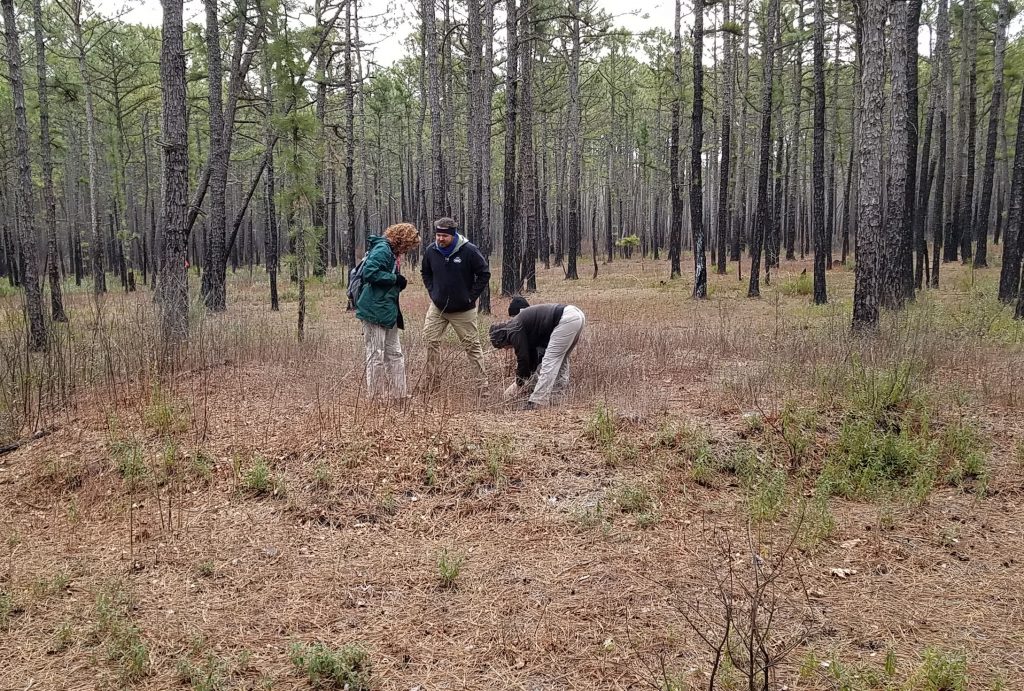
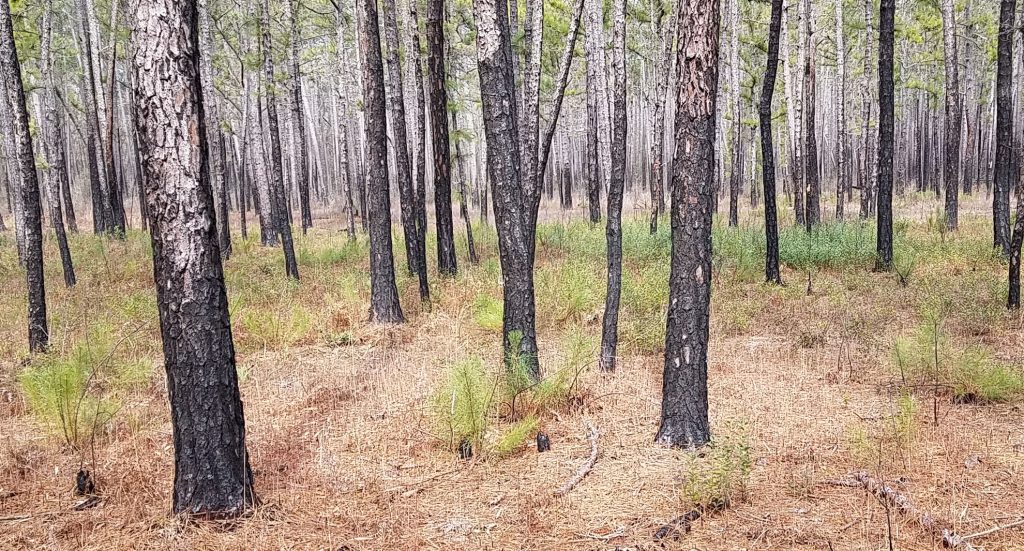
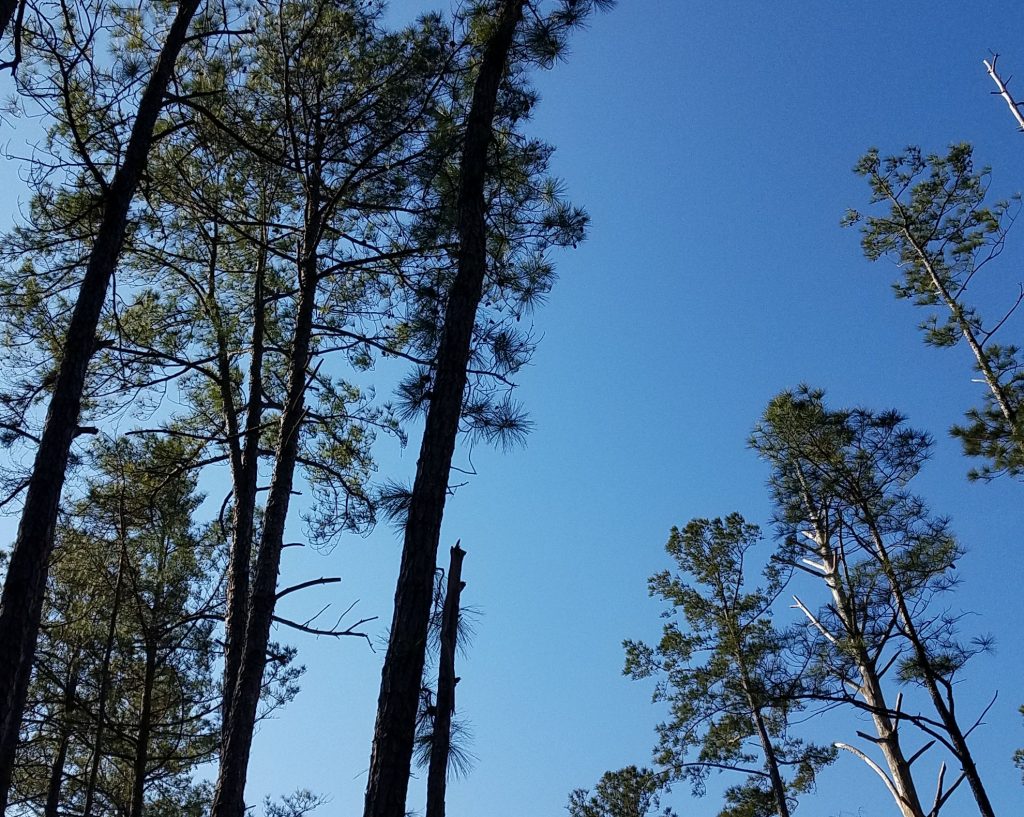
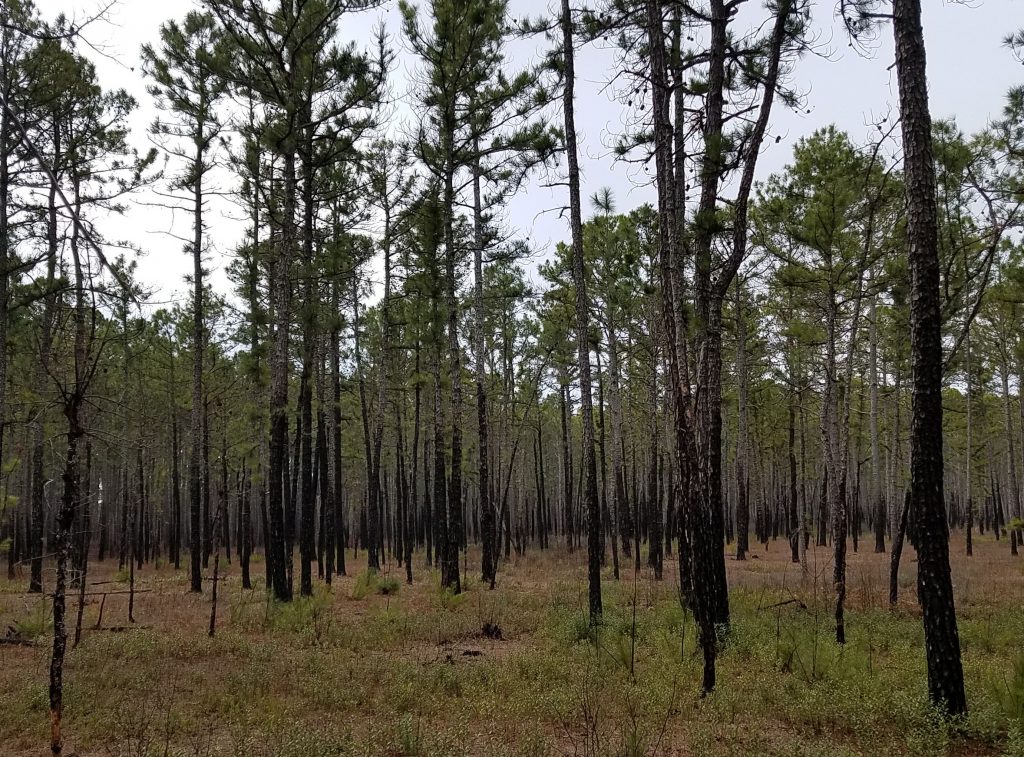
John,
I loved the photo of Lytton and myself by the 300 yr old lightwood stump. I wonder if I could get you to e-mail me a high resolution copy of it. I tied to print it from the blog site but it came out a little fuzzy.
Great article!
Thanks
Cecil
Cecil Frost Ph.D.
Landscape Fire Ecologist
Research Collaborator, University of North Carolina
119 Potluck Farm Road
Rougemont, NC 27572-9244
(919) 906-1915 Cell phone (has voice mail)
(336) 364-1924 Home office (feel free to call days, weekends and up to 10 pm nights)
cecil.frost@earthlink.net
fine-scale mapping of presettlement fire regimes and vegetation
former coordinator of the North Carolina Plant Conservation Program
former member of the LANDFIRE national team for Fire Regime Condition Class